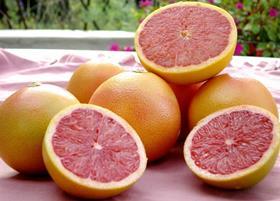
Larger sizing and excellent market conditions has led to a higher packed-for-export figure for South African grapefruit than originally expected, reaching close to the 12.2m carton mark.
Normally the packed-for-export figure does not indicate the actual export figure, but the country’s citrus growers association, CGA, says that this is nevertheless an improvement on the original estimate of 10.9m cartons.
This figure is well below the 13.8m cartons exported in 2014 and the 14.2m cartons exported in 2015.
The original, lower estimate was formulated because of dry and hot conditions in all grapefruit regions, and hail in the Hoedspruit region.
“The estimate, which was prepared in mid-March, also anticipated a predominance of smaller sized fruit,” says the CGA. “However, late March rains actually resulted in larger sizing predominating, further exacerbated by fruit drop due to the excessive heat. The larger sizing and excellent market conditions meant that the actual packed for export figure was closer to the 12.2m carton mark.”
CGA says the hot conditions extended into winter, postponing the start of the season. “Whereas in previous years harvesting peaked in weeks 18-20, this year the peak was in weeks 21-23.”
Figures released by the CGA showed that Europe received 45 per cent of total exports, with Asia receiving 35 per cent.
“Grapefruit cartons exported to the EU have edged up to 5.2m,” says the association, adding that, as a percentage, Europe increased from 39 per cent in 2015 to 45 per cent, although this was from a lower volume exported.
South East Asia, which is predominantly China and South Korea, remained static at about 2m cartons, as did North America at 500,000 cartons. “Asia, predominantly Japan, was the biggest loser, dropping 1m cartons from 2015 to 2.2m cartons this season.'
Exports to Russia also declined and there was a minor drop in exports of South African grapefruit to the UK. In line with a lower crop, exports to the Middle East also declined somewhat.
“Markets reported an undersupply, leading to excellent grower returns,” says the CGA.
The CGA also commented on the latest Memorandum of Understanding which was signed between China’s Entry-Exit Inspection and Quarantine Association (CIQA) and Fruit South Africa (FruitSA), saying it would broaden fruit trade between the two countries.
Mashudu Silimela, agriculture counsellor at the South African Embassy in Beijing, told the CGA that the memorandum covers a wide variety of products, including apples, pears, table grapes, citrus and subtropical fruits. Silimela said signing the memorandum would create a favourable environment for the development of the fruit trade between the two countries, and establish an effective cooperative mechanism between FruitSA and CIQA.
The CGA points out that FruitSA and CIQA are both national non-profit organisations whose stakeholders are growers, growers associations and export enterprises.



